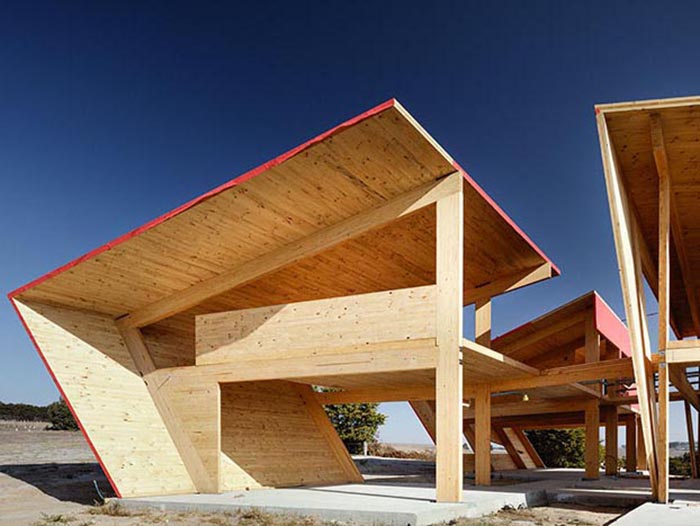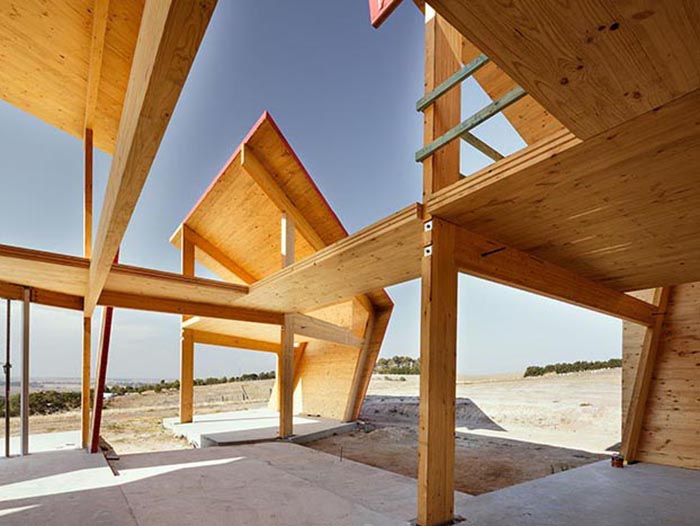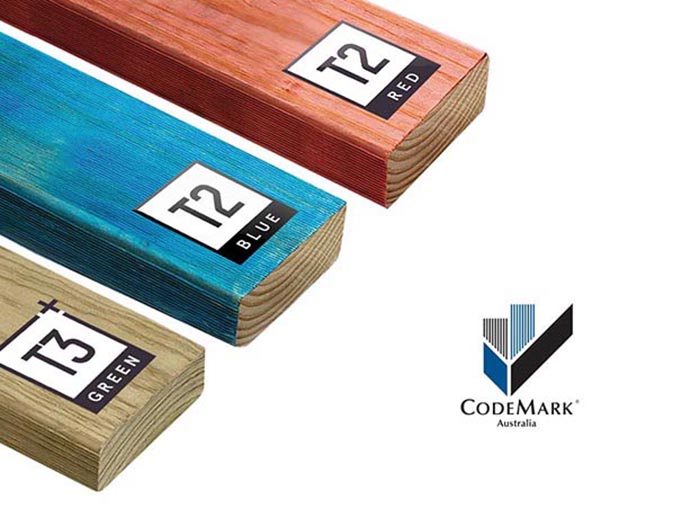As concern for the environment and climate change begins to influence most aspects of contemporary life, it’s no surprise that residents – in addition to practitioners within the architecture and design field – are demanding sustainable, climate-sensitive homes. This was certainly the case for the residents of this stunning sculptural home in Ceres, Victoria, which unfurls from a hilltop site in a series of timber planes. To bring the dynamic design to life local Melbourne architects level-ak used a combination of innovative technologies to devise a structural system comprising a concrete slab, CLT panels, cladding and insulation, and rooftop solar panels. The structural frame itself comprises a number of portal frames built from Hyne Timber Glue Laminated Timber, which effectively functions as the skeleton of the new family home.

Overlooking a farm that sprawls across a scenic hillside and valley, the home features a series of irregularly-shaped pavilions that echo the form of boulders on site. In addition to making a bold design statement, the angular shapes and strong design lines of these pavilions serve as a buffer against wind and harsh sunlight, creating a sense of shelter in an otherwise highly exposed position. The home and farm were envisioned as an autonomous, zero-emission residence that will, in time, become carbon positive. Through a combination of solar and wind power and the thermal mass of the concrete floor slab, the home will be able to operate independent ‘off the grid’, thus reducing its carbon impact throughout its entire lifecycle.

This focus on sustainability informed level-ak’s material selection throughout the project, which also reflects an acute sensitivity to its unique, picturesque site. The pavilions themselves are oriented toward the North in order to maximise views and solar exposure, creating an angled plan set on a tessellated grid that responds to stone ruins originally on the site of the house proper. These ruins have since been recycled and put to use as supports for internal staircases.
Structurally, the home avails of the many benefits of Hyne Timber Glue Laminated Timber (GLT), an engineered timber product comprised of layers of timber glued atop one another. Unlike Cross-Laminated Timber (CLT), in which the grain of each layer runs perpendicular to that beneath it, the layers in GLT are arranged so that the grains of each layer run parallel to one another. This results in a high level of strength and load bearing capacity, particularly in a column, structural beam, or portal configuration. For the Ceres home level-ak specified the lattermost configuration, providing a secure framework upon which CLT panels and cladding and insulation were subsequently mounted.

In addition to its high strength and suitability for structural applications, Hyne Timber GLT offers a range of performance benefits including high fire and seismic resistance, extended durability, and prefabrication capabilities. A sustainable alternative to conventional building materials, it is manufactured via a process that requires substantially less fossil fuel energy per unit volume than concrete, steel, or aluminium, resulting in an ultra-low carbon footprint. Beyond this, sustainability benefits include a high natural degree of thermal insulation, enabling reduced reliance on artificial heating and cooling, and Chain of Custody Certification that provides assurance that the timber incorporated in the product has been sourced sustainably. Studies also suggest that natural products including GLT may have positive effects on the mental health and wellbeing of occupants when used as part of a broader biophilic design scheme.
Hyne Timber is a proud sponsor of the 2019 Sustainability Awards, to be held at The Star in Sydney on 7 November 2019. Learn more about Hyne Timber’s selection of high performance, sustainable structural timber products at https://www.hyne.com.au.

